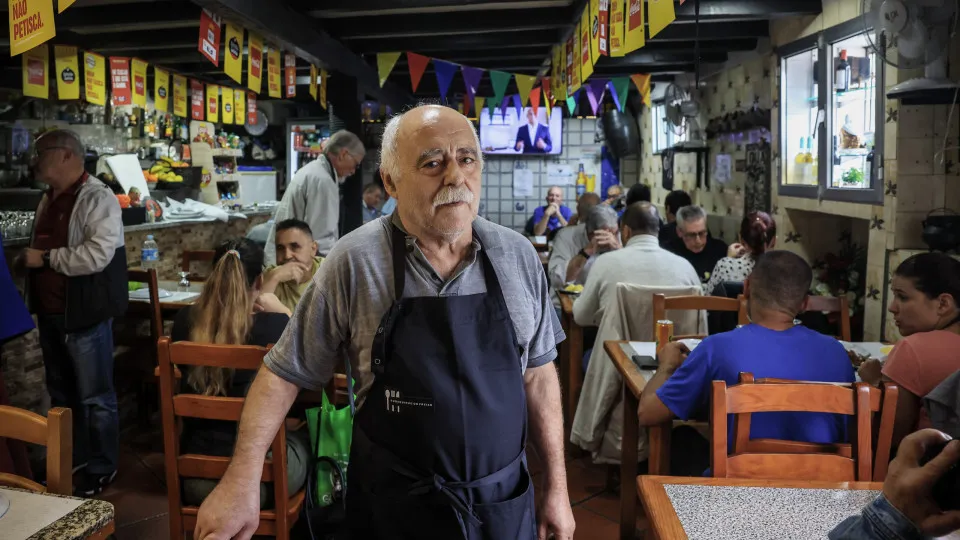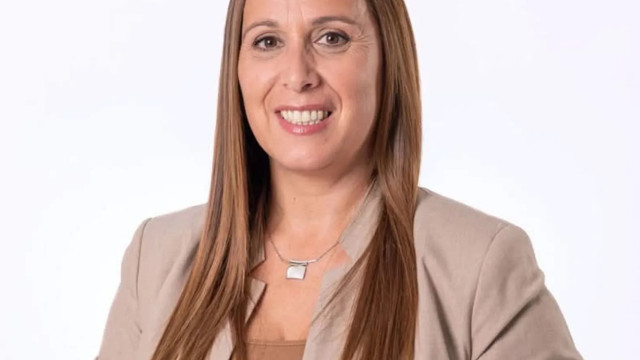
The modest entryway decorated with tools, posters of Madonna and other icons, small wild snakes preserved in formaldehyde, and the essential emblem of FC Porto mark the approach to a plot cultivated by 86-year-old Alberto Cathou, a resident of the Agra neighborhood in Porto since 1959, after a lifetime of work.
“It’s just fruit trees. I have fig, mango, and pomegranate trees, and a huge persimmon that’s been there for years, but the persimmons stay for the birds, as I can’t climb up there,” explains Cathou from his makeshift balcony with a luxury view over the Douro River, accessible by a fragile metal door.
Before settling here, Alberto worked as a goldsmith, then for a crockery factory owned by Mário Navega nearby for 20 years, later moving to a dye factory on Rua do Heroísmo for another eight to ten years before unemployment at 55 and retirement at 60.
“This is a shack that I built which was part of [a house with] a small gate over there, which used to have houses and is now abandoned, just walls. The owner, who doesn’t live here, allowed me to cultivate the garden over 20 years ago,” he notes, his eyes distant.
His current routine faces a threat from the high-speed rail project. The Environmental Compliance Report for the Execution Project (RECAPE) for the Porto-Oiã section confirms the planned demolition of houses on Rua da China and Travessa da Presa da Agra, just beneath the existing railway line that will be expanded.
“I just wish they’d do this work in 10 years, when I’m not around. All I want is to be sheltered in a house. Just a few more years, and I’d be here until the end. Now they thought of this, well…,” he lamented.
Further down the street lives António Araújo, 65, who was approached in March by Luso-Roux workers requesting the land registry for the house he’s lived in for nearly two decades.
“They came back about a month and a half ago in September. They examined all the houses inside and photographed them (…) showed me the project and the red line that marked the land whose buildings are to be demolished,” he detailed.
From his balcony, offering views “from Valongo to Corte Inglés in Gaia,” António takes a deep breath to describe what these months have meant: “It’s not easy, nobody imagines what this is like, going to bed… [and not being able to sleep].”
A while back, a municipal company, Go Porto, upgraded his street and part of Travessa do Freixo, sparking some hope.
“We [neighbors] thought: they’re doing street works, renewing sewage and water networks… spending so much money, for what? We assumed we’d be safe. But no… we had to change our mindset because there’s no alternative,” he said, resigned.
A resident on Travessa Presa de Agra spoke after visiting Buraquinho do Freixo, a local restaurant that doubles as a community hub, drawing everyone from construction workers to drivers.
Seventy-year-old Alberto Sousa e Silva, the restaurant owner living above the establishment, is taken aback by the high-speed rail project’s progress, still pending approval from the Agência Portuguesa do Ambiente (APA) and Infraestruturas de Portugal (IP).
“I know almost nothing. It’s often said the cuckold is the last to know,” he quickly remarks, managing the business for 40 years.
Alberto Sousa e Silva criticizes the approach by technical teams contracted by the AVAN North consortium (Mota-Engil, Teixeira Duarte, Alves Ribeiro, Casais, Conduril, and Gabriel Couto), stating, “it hasn’t been correct,” learning property news through media before representatives arrived two months ago.
Community reaction has been “bad,” he states.
“These are people who’ve lived here for 40, 50 years, elderly, hearts always in hand, asking this one and that one,” he says, “We’re here and don’t know whether we’re staying or moving, or when it is or isn’t happening.”
From the restaurant owner’s perspective, “this is wrong” and “playing with people,” as he awaits to see if the line developers “compensate him sufficiently.”
“If I have to go, [let it be] now, to settle my life. At 70, what will I do? I have a house, [am] working reasonably, thank God, and now go where? It’s complicated,” he concludes.
*** Ana Francisca Gomes and Jorge Sá Eusébio (text), and José Coelho (photos) ***




